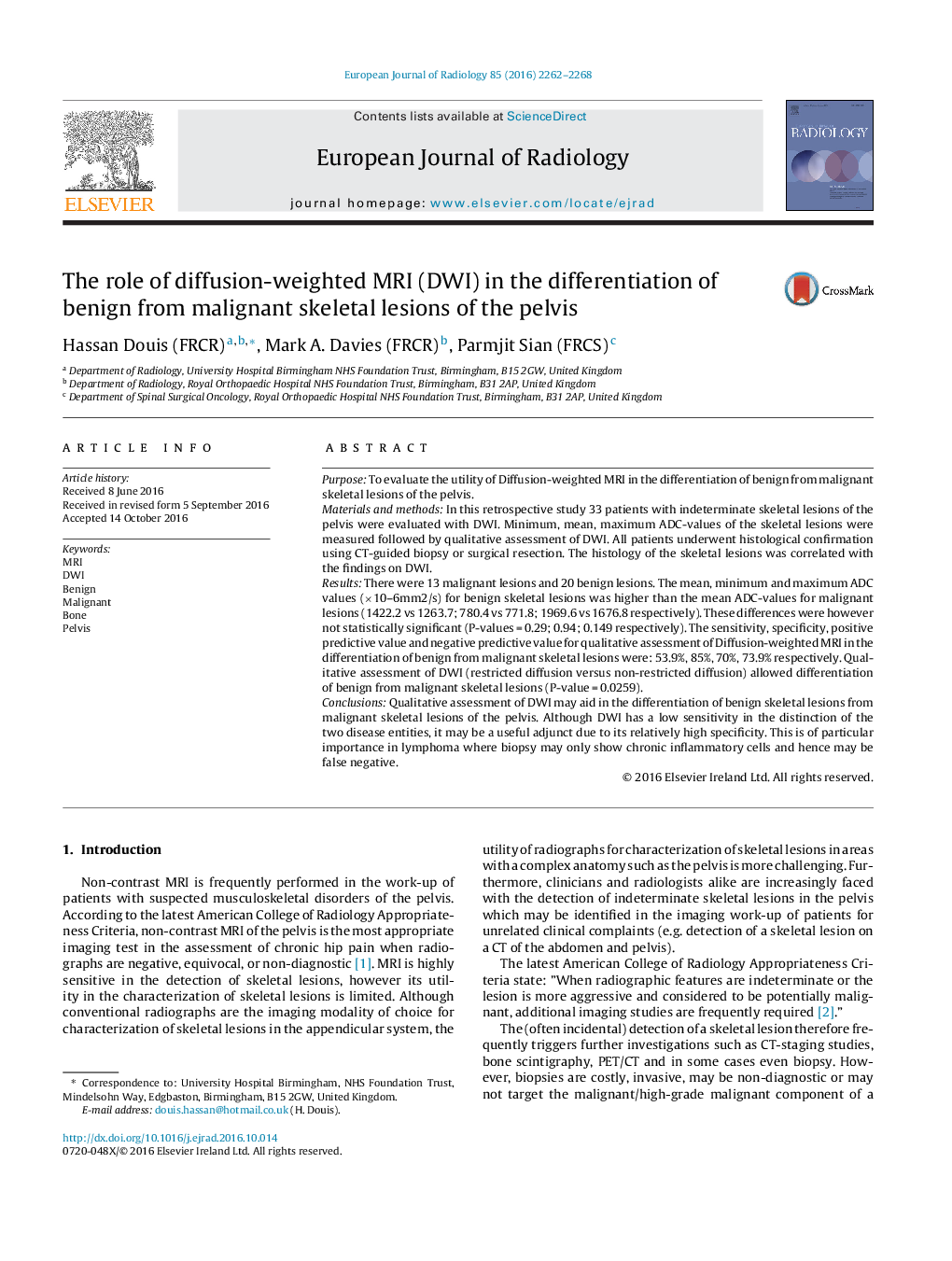| Article ID | Journal | Published Year | Pages | File Type |
|---|---|---|---|---|
| 5726104 | European Journal of Radiology | 2016 | 7 Pages |
PurposeTo evaluate the utility of Diffusion-weighted MRI in the differentiation of benign from malignant skeletal lesions of the pelvis.Materials and methodsIn this retrospective study 33 patients with indeterminate skeletal lesions of the pelvis were evaluated with DWI. Minimum, mean, maximum ADC-values of the skeletal lesions were measured followed by qualitative assessment of DWI. All patients underwent histological confirmation using CT-guided biopsy or surgical resection. The histology of the skeletal lesions was correlated with the findings on DWI.ResultsThere were 13 malignant lesions and 20 benign lesions. The mean, minimum and maximum ADC values (Ã10-6mm2/s) for benign skeletal lesions was higher than the mean ADC-values for malignant lesions (1422.2 vs 1263.7; 780.4 vs 771.8; 1969.6 vs 1676.8 respectively). These differences were however not statistically significant (P-values = 0.29; 0.94; 0.149 respectively). The sensitivity, specificity, positive predictive value and negative predictive value for qualitative assessment of Diffusion-weighted MRI in the differentiation of benign from malignant skeletal lesions were: 53.9%, 85%, 70%, 73.9% respectively. Qualitative assessment of DWI (restricted diffusion versus non-restricted diffusion) allowed differentiation of benign from malignant skeletal lesions (P-value = 0.0259).ConclusionsQualitative assessment of DWI may aid in the differentiation of benign skeletal lesions from malignant skeletal lesions of the pelvis. Although DWI has a low sensitivity in the distinction of the two disease entities, it may be a useful adjunct due to its relatively high specificity. This is of particular importance in lymphoma where biopsy may only show chronic inflammatory cells and hence may be false negative.
